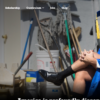People are a little bit stingier in barber chairs and Ubers than they were just a few years ago.
The shares of adults who say they always tip their hair stylists, servers at sit-down restaurants and food delivery people have each fallen 8 percentage points since 2021, according to a Bankrate survey released Wednesday. That rate slipped 7 percentage points for taxi and ride-hail drivers over the same period.
Three years ago, the economy was reopening from the pandemic and inflation was higher than it is now, but so was concern for front-line workers.
At the time, three-quarters of consumers reported always tipping restaurant servers, but today just two-thirds do. Despite modest upticks since last year, barely more than half of people now count themselves reliable tippers of hairdressers (55%) and food delivery drivers (51%), while only 41% say the same when it comes to ordering a ride.
The survey reflects Americans’ growing ease bypassing ubiquitous tipping prompts, from coffeeshops to airport terminals in the post-Covid economy, especially as sticker prices have risen. While consumer spending has held remarkably steady, many households are feeling the squeeze from persistent inflation and tightening their belts accordingly. Some of that newfound caution may be factoring into when, where and how much people tip.“After the pandemic came inflation, and that has seriously cut into consumers’ buying power,” said Ted Rossman, senior industry analyst at Bankrate.
Some workers’ wages are now rising faster than prices, but others are still catching up. Many Americans “are tipping less because they have less money to go around, and because they’re no longer appreciating service industry workers as much,” Rossman said.
Any pullback in restaurant tips doesn’t necessarily mean servers are worse off.
At least 25 states have raised or will raise their minimum wage this year, with several major cities — including New York and Chicago — mandating a full minimum wage for tip earners. California’s new $20 hourly minimum for workers at big fast-food chains took effect in April. And some of the speediest hiring and wage growth lately has been in part-time and service-sector roles, including those where tips are common.
The larger that sort of psychological distance … the less likely we are to follow through on that intention of tipping.
Hans Frech La Rosa, Duke University’s Common Cents Lab
But many restaurant workers are seeing some impact from diners’ “tipflation” fatigue. Roughly equal shares said their tips have stayed flat since last year as those who saw them decline (36% and 35%, respectively), according to a recent survey by SpotOn, the maker of a digital payment platform used by eateries and retail shops. Only 29% said their gratuities increased.Some patrons may be turned off by preset tip amounts, said Hans Frech La Rosa, senior behavioral researcher at Duke University’s Common Cents Lab. Others might see mobile payments as a bit more impersonal, making it easier to skimp.
“The larger that sort of psychological distance from the person or business — or the weaker that shaming force is — the less likely we are to follow through on that intention of tipping,” he said.
The Bankrate findings also come amid a broader reshuffling of consumers’ leisure habits, with spending pullbacks in some areas and upticks in others — in many cases along existing socioeconomic fault lines.
Budget-conscious diners have retreated from fast-food chains this year following menu price hikes, kicking off a race to lure them back with deals and discounts. Meanwhile, middle- and upper-income consumers are still splashing out on vacations; cruise lines have had bookings surge.
Other consumer shifts are more situational than zero-sum: In most major U.S. cities, for example, transaction volumes have fallen sharply midday during the workweek, but they’ve been more than offset by increases on evenings and weekends, the digital payments process Square said last month. It’s a sign that Americans are holding onto their lunch money to spend on happy hour drinks and weekend brunch.
With people’s spending behaviors in flux, there’s little consensus around what the new normal should be.One TikToker triggered widespread debate after posting in February about opting not to tip the stylist she paid $350 to do her braids. She pointed out that she paid in cash, necessitating an “inconvenient” ATM trip, as part of her rationale for skipping gratuity.
While plenty of service workers may disagree with such decisions, it seems clear that bills and coins are still preferred in the era of card readers. In the SpotOn survey, a resounding 89% of restaurant workers said if you’re going to tip, they’d rather you do it in cash.













